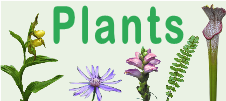







Loading profile. Please wait . . .
Sedum pusillum Michx.
Puck's Orpine




Federal Protection: No US federal protection
State Protection: Threatened
Global Rank: G3
State Rank: S3
Element Locations Tracked in Biotics: Yes
SWAP 2015 Species of Greatest Conservation Need (SGCN): Yes
SWAP 2025 Species of Greatest Conservation Need (SGCN): Yes
2025 SGCN Priority Tier: Moderate Conservation Concern
Element Occurrences (EOs) in Georgia: 89
Habitat Summary for element in Georgia: Granite outcrops, often in mats of Hedwigia moss under Juniperus virginiana
Annual herb with succulent stems up to 3 inches (4 - 8 cm) tall, branching from the base, pale bluish-green, often tinged with red; usually in small tufts or patches. The leaves less than 0.5 inch (0.4 - 1.2 cm) long and about 2 mm thick, alternate, succulent, pointed, more or less round in cross-section. The flowers are about 0.3 inch (0.6 - 0.8 cm) wide, with 4 white, spreading petals, 4 green sepals, 8 red-tipped stamens, and 4 erect or spreading carpels. Fruits are 0.2 - 0.4 inch (0.6 - 1 cm) wide, cross-shaped, with 4 segments that split open on the upper surface to release seeds.
Elf-orpine (Diamorpha smallii), which often grows with Sedum pusillum, has bright red leaves and stems, unbranched stems, and its fruit segments split open on the lower surface. It occurs on granite and sandstone outcrops, where it flowers late March through early April.
Nevius’s Stonecrop (Sedum nevii) occurs on gneiss ledges on river bluffs in west Georgia. For more information, see: https://www.georgiabiodiversity.org/portal/profile?group=plants&es_id=20337
Piedmont granite outcrops, usually in mats of moss in semi-shaded areas.
Granite Stonecrop is a winter annual; its seeds germinate in the fall and the plants overwinter as tiny rosettes. Its flowers open in very early spring and are pollinated by a variety of flies, ants, and small bees which are attracted to the flowers’ fragrance and the nectar produced by nectaries at the center of the flowers. Cross-pollination is encouraged by the fact that the anthers of a given flower mature and produce pollen before that flower’s stigma becomes receptive. The flowers are also capable of self-pollination, a strategy that promotes fertilization in flowers that open in early spring before insects arrive. Both cross- and self-pollinated plants produce fruit and viable seed. Plants wither and disappear soon after their fruits reach maturity in late spring.
Surveys are best conducted during flowering (March–April) and fruiting (April–May). Plants wither and disappear by late spring.
Georgia, Alabama, North Carolina, and South Carolina.
Quarrying of outcrops, trash dumping, off-road vehicle traffic, trampling, deliberate mulching designed to destroy rare plants.
| Threat 1 | Threat 2 | Threat 3 | |
|---|---|---|---|
| General Threat | Pollution | Climate change & severe weather | None |
| Specific Threat | None | None | None |
Sedum pusillum is ranked S3 by the Georgia Department of Natural Resources, indicating that the species is vulnerable to extirpation in Georgia. It is listed as Threatened by the State of Georgia. Approximately 40 populations have been confirmed since 2000, and only 10 are protected on conservation lands.
Protect granite outcrops from quarrying, trash dumping, vehicle traffic, and other disturbance. Direct foot traffic away from populations. Purchase granite outcrops for conservation.
Chafin, L.G. 2007. Field guide to the rare plants of Georgia. State Botanical Garden of Georgia and University of Georgia Press, Athens.
Clausen, R.T. 1975. Sedum pusillum, in: Sedum of North American north of the Mexican Plateau. Cornell University Press, Ithaca, New York. https://www.crassulaceae.com/crassulaceae.com/botanik/pflanzen/botanzeige_scan_en.asp?gnr=1340&scan=182420-1&cat=5&name=Sedum
GADNR. 2020. Element occurrence records for Sedum pusillum. Georgia Department of Natural Resources, Wildlife Resources Division, Social Circle, Georgia.
Kral, R. 1983. A report on some rare, threatened, or endangered forest-related vascular plants of the South. Technical Publication R8-TP2. United States Forest Service, Atlanta.
NatureServe. 2020. Sedum pusillum species account. NatureServe Explorer. NatureServe, Arlington, Virginia. https://explorer.natureserve.org/Taxon/ELEMENT_GLOBAL.2.129130/Sedum_pusillum
Nourse, H. and C. Nourse. 2007. Favorite wildflower walks in Georgia. University of Georgia Press, Athens.
Ohba, H. 2009. Sedum pusillum species account. Flora of North America, Vol. 8. http://beta.floranorthamerica.org/Sedum_pusillum
Patrick, T.S., J.R. Allison, and G.A. Krakow. 1995. Protected plants of Georgia. Georgia Department of Natural Resources, Natural Heritage Program, Social Circle.
Weakley, A.S. 2015. Flora of the southern and mid-Atlantic States. University of North Carolina Herbarium, University of North Carolina, Chapel Hill. http://www.herbarium.unc.edu/flora.htm
Wyatt, R. 1983. Reproductive biology of the granite outcrop endemic Sedum pusillum (Crassulaceae). Systematic Botany 8(1): 24-28. https://www.jstor.org/stable/2418559?seq=1#metadata_info_tab_contents
Wyatt, R. 1997. Reproductive ecology of granite outcrop plants from the southeastern United States. Journal of the Royal Society of Western Australia 80: 123-129. https://search.proquest.com/docview/762208899?pq-origsite=gscholar
Linda G. Chafin
L.Chafin, Aug. 2008: original account
D.Weiler, Jan. 2010: added pictures
L. Chafin, May 2020: updated original account.




